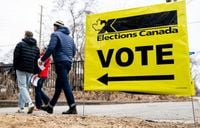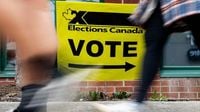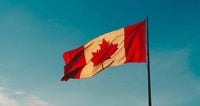Canadians across the country are heading to the polls today, April 28, 2025, to participate in the federal elections that will determine the next government in Ottawa. Polling stations opened at 9:30 a.m. and will remain open until 9:30 p.m., allowing voters ample time to cast their ballots.
To vote, Canadians must present valid identification. This can be a government-issued ID such as a driver’s license that includes their name, photo, and address. Alternatively, voters can provide two pieces of identification that bear their name, with at least one showing their current address. Acceptable documents include a bank statement or a utility bill. For a complete list of acceptable identification, voters are encouraged to visit the Elections Canada website.
Interestingly, nearly a quarter of the electorate has already participated in advance voting, which took place during the Easter weekend. In the Gaspésie–Îles-de-la-Madeleine–Listuguj constituency alone, 18,123 individuals voted in advance, representing approximately 19% of registered voters in that area.
This election comes after a brief but intense 36-day campaign period, where the political landscape shifted dramatically. Just four months ago, the Conservative Party, led by Pierre Poilievre, held a commanding lead in the polls, boasting a margin of over 20 points against the Liberal Party of Canada (PLC) headed by the unpopular Prime Minister Justin Trudeau. However, the dynamics changed with the rise of Mark Carney, a former banker, who has effectively challenged Poilievre’s position.
Carney’s entry into the race has attracted attention, particularly with his experience in international trade and economics. He has positioned himself as a viable alternative to Poilievre, who has been likened to Donald Trump, especially after Trump’s controversial comments about making Canada the 51st state of the U.S. This comparison has made some Canadians rethink their support for Poilievre.
In Calgary, a city that rarely elects Liberals, there is a noticeable shift in sentiment. The Liberals previously approached Lindsay Luhnau, a local cooperative investment director, to run in Calgary-Centre but faced rejection due to the party's tarnished reputation under Trudeau. However, with Carney’s leadership, Luhnau reconsidered, stating, "When he announced his resignation, things started to change, and when Mark Carney was elected leader of the party [on March 9], I called the organizer to ask: 'Is the spot still open?'" This change in candidate strategy illustrates the shifting tides within the Liberal Party.
On election day, Canadians are reminded to check their voter information card, which provides details about their assigned polling station. If voters are unsure where to go, they can consult the card sent by Elections Canada. It is essential to vote at the designated polling station, as that is where their names are registered.
For those who haven’t registered yet, there is still hope. Canadians can register at their polling station on election day. Elections Canada has made provisions to ensure that every voter has three consecutive hours to vote, and employers are required to allow their employees the necessary time off to fulfill this civic duty.
The busiest times at polling stations are expected to be early in the morning and after 4 p.m. Voters are encouraged to take advantage of the quieter hours between 10 a.m. and 12 p.m. or from 12 p.m. to 4 p.m. to avoid long lines.
As the polls close at 9:30 p.m., the counting of votes will begin. Voters who are still in line at closing time will be permitted to cast their ballots. The candidate who receives the most votes in each riding will become the Member of Parliament (MP) representing that area in the House of Commons. The party that secures the most seats will form the government, which could be either a majority government, needing at least 172 of the 343 available seats, or a minority government.
This election marks a significant moment in Canadian politics, as it is the first general election following the electoral redistribution completed in 2023. The number of ridings has increased from 338 to 343, creating new opportunities and challenges for candidates across the country.
With the stakes high and the political landscape shifting rapidly, Canadians are taking to the polls with a sense of urgency and hope for change. The outcome of this election will not only determine the next government but also shape the direction of the country for years to come.
As Canadians cast their votes today, they are not just participating in a routine electoral process; they are making a choice about the future of their nation. The results will be closely watched, not only within Canada but also internationally, as the world looks on to see how this pivotal moment will unfold.






